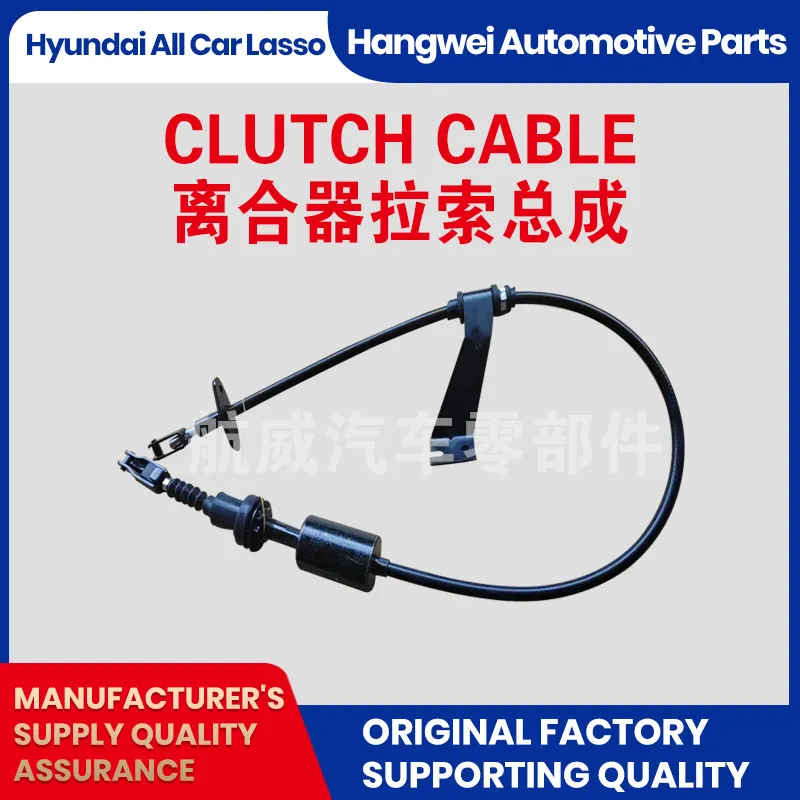Clutch Line: High-Pressure, Leak-Proof, OEM Fit & Durable
An Insider’s Guide to Clutch Lines (and why good ones quietly save your day)
If you’re sourcing a Clutch Line for motorcycles, light trucks, or rugged machinery, you already know the stakes: consistency, low friction, and no nasty surprises at mile 30,000. I’ve toured more than a few cable shops, and—honestly—the difference between a good assembly and a great one is in the details you don’t see.

What’s trending (and why it matters)
Cables aren’t “old tech.” In fact, demand for low-friction liners (PTFE, POM blends), tighter bend radii, and longer life cycles keeps growing. Many customers say stainless 7×7 or 7×19 inner wires with PTFE liners feel smoother and last longer in dirty, off-road environments. There’s also a tilt toward sealed boots and better swaged ends—small upgrades that reduce warranty claims. For electric two-wheelers and ATVs, the humble Clutch Line still shows up as a robust control solution where hydraulics would be overkill.
Product snapshot: Clutch Push-Pull Cable
Origin: Qinghe County Minjiang Street south, Wuzhishan Road east. Built with advanced materials and tight process control for reliable, repeatable performance. To be honest, the tactile “feel” under foot or lever is where this Clutch Line earns its keep.
| Parameter | Typical Spec | Notes |
|---|---|---|
| Construction | Bowden push-pull; SS 7×7/7×19 inner; PTFE-lined HDPE conduit | Smooth, low-friction actuation |
| Inner wire Ø | ≈1.5–3.0 mm | Application-specific |
| Min bend radius | ≈75 mm | Real-world routing may vary |
| Tensile capacity | Up to ~2.5 kN (2.5 mm SS 7×7) | Per internal pull tests |
| Operating temp | -40°C to 120°C (150°C peak) | Short-term peaks allowed |
| Stroke length | Up to 300 mm std; 1000 mm custom | Customizable |
| End fittings | M6/M8 thread, clevis, eyelet, ball stud | Wide hardware library |
| Friction (dynamic) | ≤0.12 | Liner + lube dependent |
| Life cycles | 150k–300k; >500k with boots | Rig-tested; usage-dependent |
| Corrosion resistance | 240–480 h salt spray | ASTM B117 / ISO 9227 |
Process flow (how it’s built)
Materials: SS inner wire (ISO 2408-grade rope), PTFE liner, HDPE/PA outer, zinc-nickel plated fittings. Methods: multi-strand stranding, extrusion of conduit, precision swaging, pre-stretching, and final lubrication. Testing: tensile pull, cyclical actuation (≥150k cycles), salt spray, temperature soak, and dimensional checks. Service life depends on routing and load—still, a well-routed Clutch Line with sealed boots is surprisingly durable.
Where it’s used
Motorcycles, scooters, light commercial vehicles, forklifts, agricultural tractors, UTV/ATV, go-karts, and industrial actuators. In marine controls (non-immersed), stainless assemblies hold up well. Many mechanics say switching to PTFE-lined Clutch Line assemblies cuts lever effort, especially after winter storage.
Vendor landscape (quick comparison)
| Vendor | MOQ | Lead Time | Certifications | Customization |
|---|---|---|---|---|
| HWEI Cable (Qinghe, CN) | ≈100 pcs | 2–4 weeks | IATF 16949, ISO 9001, RoHS | End fittings, stroke, liners, boots |
| Global Trading House | 500+ pcs | 4–8 weeks | Varies by source | Moderate; catalog-first |
| Local Fabricator | Low | 1–2 weeks | Shop-level | High; small batches |
Customization notes
Options include 7×7 vs 7×19 cores, stainless vs galvanized, PTFE or POM liners, sealed rubber boots, anti-kink springs, color-coded outer sheaths, and fittings (clevis, eyelet, ball, threaded). Routing advice: avoid acute bends, secure at intervals, and keep the Clutch Line away from high-heat zones.
Field results (snapshots)
- Motorcycle OEM (SEA): reported ~12–15% lower lever effort after switching to PTFE-lined assemblies; warranty returns dropped noticeably after monsoon season.
- Municipal bus depot: longer interval between adjustments; operators noted more consistent pedal feel in winter, which frankly is where cheap cables struggle.
- Packaging line retrofit: push-pull configuration enabled remote actuation without hydraulics; maintenance praised quick swap-outs and stable stroke.
Compliance and testing
Assemblies can be produced under IATF 16949 and ISO 9001 quality systems; materials are available as RoHS-compliant. Corrosion tested to ASTM B117 / ISO 9227; inner wire per ISO 2408 rope requirements. Actual service life depends on load, routing, and environment, as always.
Authoritative citations
- ASTM B117 – Standard Practice for Operating Salt Spray (Fog) Apparatus. https://www.astm.org/b117-19.html
- ISO 9227:2017 – Corrosion tests in artificial atmospheres — Salt spray tests. https://www.iso.org/standard/63543.html
- ISO 2408 – Steel wire ropes — Requirements. https://www.iso.org/standard/73919.html
- IATF 16949:2016 – Automotive QMS. https://www.iatfglobaloversight.org/
-
Clutch Line: Braided, Leak-Proof, OEM-Grade PerformanceNewsNov.10,2025
-
Throttle Cable: Durable, Smooth Control & Universal FitNewsNov.10,2025
-
Throttle Cable: Durable, Smooth, Universal Fit, Easy InstallNewsNov.10,2025
-
Clutch Line: Durable, Leak-Proof, OEM-Grade PerformanceNewsNov.10,2025
-
Hand Brake Cable | Custom, Universal & Trailer SolutionsNewsNov.10,2025
-
Clutch Line: High-Pressure, OEM-Fit, Corrosion-ResistantNewsNov.03,2025
